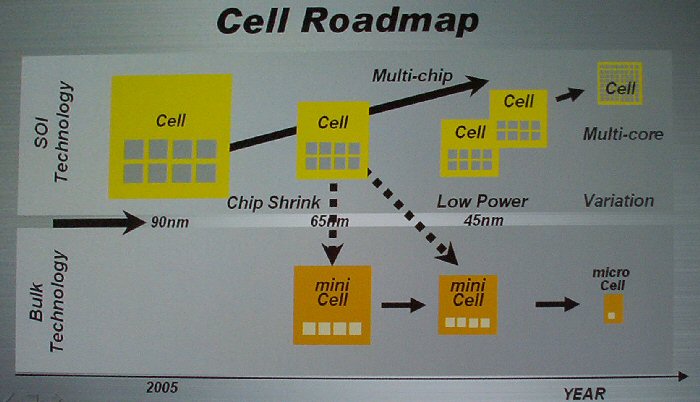ihamoitc2005
Veteran
CELL not just for consumers but also military and research
Consumers do not know or care about flops so idea of CELL being high flops for marketing is silly. CELL is high flops because many future applications are high flops and CELL has very high programmable flops density. Applications are many from research to military are very profitable with very high margin. Currently many use custom design chip for these purposes due to low flops density of "off-the-shelf" chips but CELL allows cheap scalable high programmable flops density alternative to custom high flops design.
Good example is expensive chip in F/A-22 jet fighter design by Hughes called CIP. CIP has very poor performance but is very expensive due to custom high programmable flops density design. Main purpose of CIP is scalable high performance multi-purpose flops for current and unknown future flops applications for navigation, targeting etc. CELL is similar but very cheap, low energy, and higher performance.
expletive said:I dont think anyone is saying that Sony doesnt know how theyre going to use it, only that theyre not sure if it will provide a tangible benefit to the mass market consumer...other than FLOPS.
A Sony exec saying the cell is needed going forward is like bill gates saying vista is needed for PCs to move forward. Don't waste your time looking.
Consumers do not know or care about flops so idea of CELL being high flops for marketing is silly. CELL is high flops because many future applications are high flops and CELL has very high programmable flops density. Applications are many from research to military are very profitable with very high margin. Currently many use custom design chip for these purposes due to low flops density of "off-the-shelf" chips but CELL allows cheap scalable high programmable flops density alternative to custom high flops design.
Good example is expensive chip in F/A-22 jet fighter design by Hughes called CIP. CIP has very poor performance but is very expensive due to custom high programmable flops density design. Main purpose of CIP is scalable high performance multi-purpose flops for current and unknown future flops applications for navigation, targeting etc. CELL is similar but very cheap, low energy, and higher performance.



